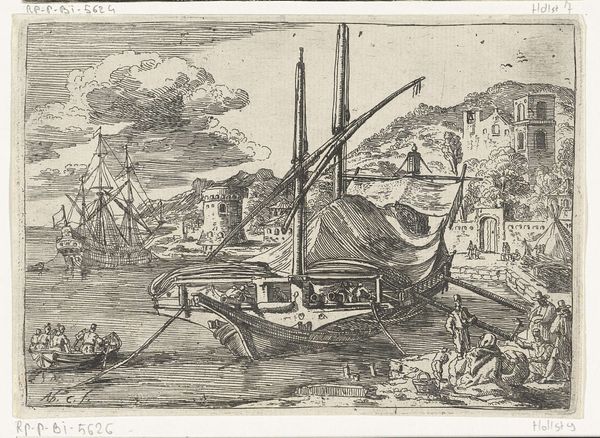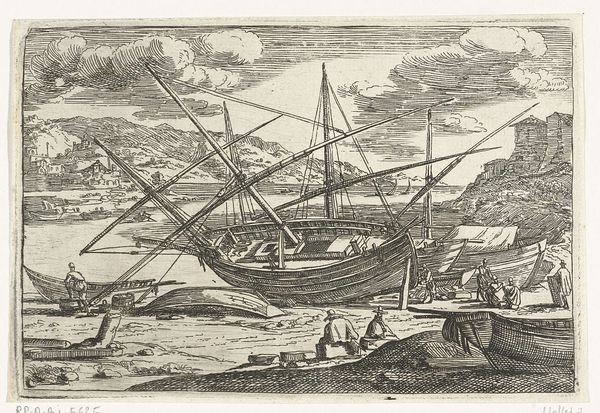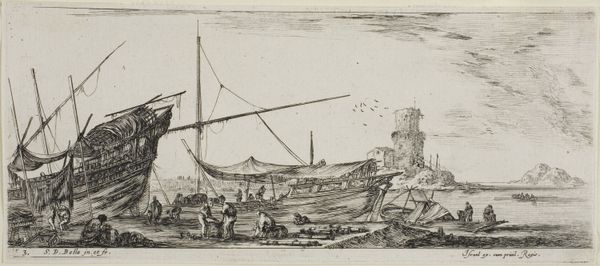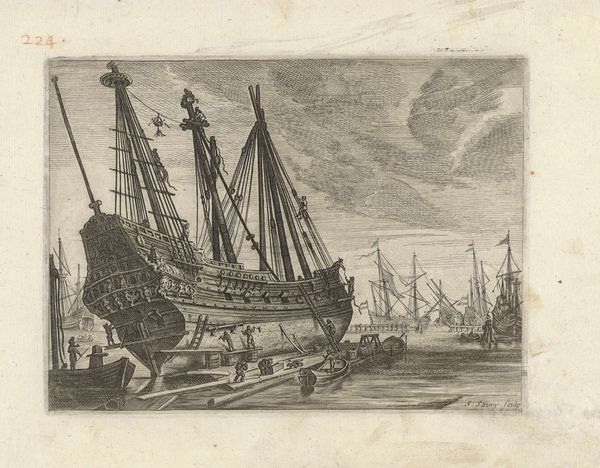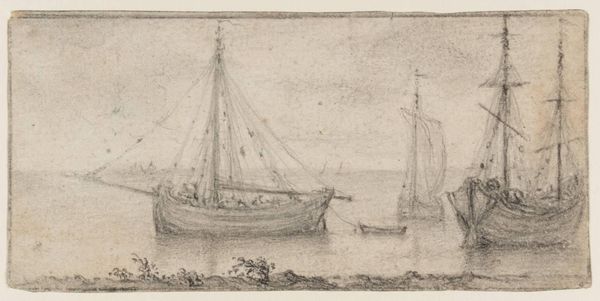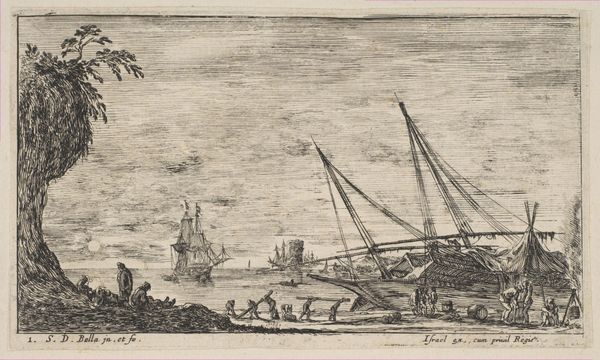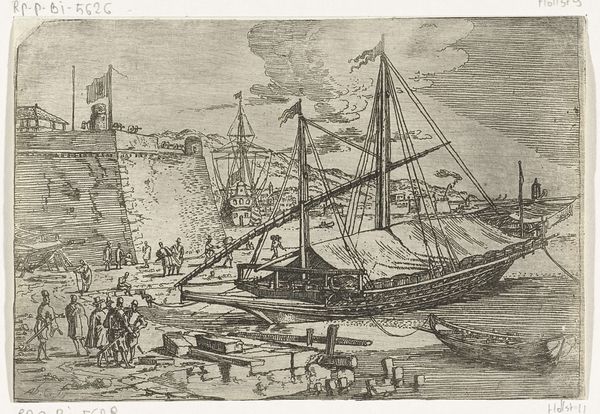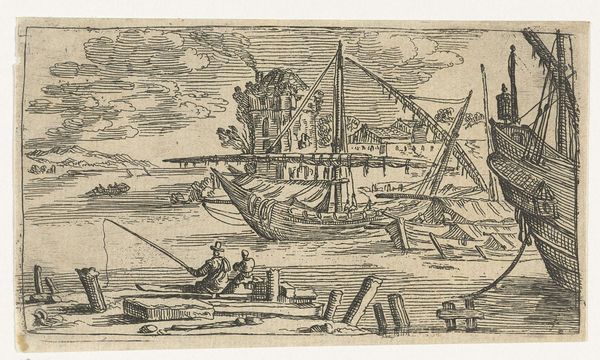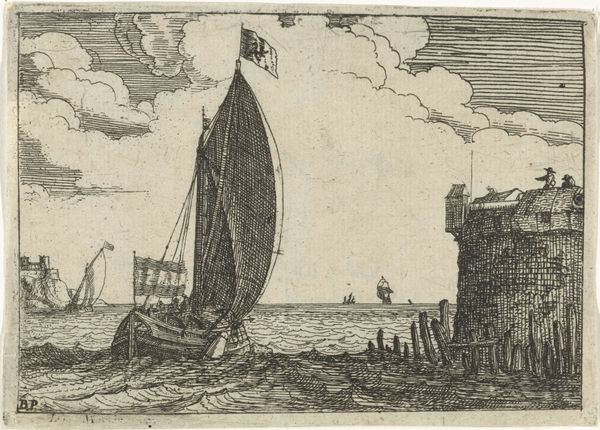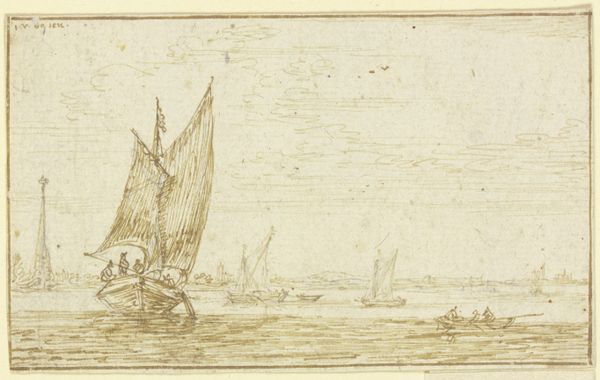
print, etching, engraving
#
baroque
#
dutch-golden-age
# print
#
etching
#
landscape
#
etching
#
cityscape
#
engraving
Dimensions: height 85 mm, width 119 mm
Copyright: Rijks Museum: Open Domain
Editor: So, this print is "Scheepswerf," or "Shipyard," by Abraham Casembroot. It's an etching from sometime between 1603 and 1658. It depicts several ships under construction or repair near what looks like a small coastal town. What really stands out to me is the stark contrast between the intricate details of the ships and the rather sketchy rendering of the background. What are your initial thoughts on the piece? Curator: It’s a fascinating snapshot into a pivotal era, isn't it? The Dutch Golden Age was fueled by maritime trade. Prints like this weren't just aesthetic objects; they were vital forms of communication. They celebrated Dutch innovation in shipbuilding and sea power, and shaped a sense of national pride and identity tied to maritime prowess. Editor: So, this wasn’t just a picture, but a statement? Curator: Precisely! Look at the detail Casembroot dedicates to the ships. Every line emphasizes their size, their structure, and implicitly, their technological superiority. Consider where prints like these would be circulated - taverns, merchants' houses. They reinforced the dominance of the Dutch East India Company. Ask yourself, who is being excluded or idealised through this imagery? The artist is placing these objects, in a moment in history that places trade and innovation above nature. Editor: It is interesting to see those power structures visualized this way. I was just focused on the artistry. Curator: And the artistry serves that power. Notice how the almost romantic depiction of the cityscape clashes with the intense commercialism surrounding it. Do you see how that contrast, in itself, further emphasizes the values being shifted onto this society at the time? It’s subtle, but those dynamics are crucial to understanding this piece within its historical context. Editor: I definitely see what you mean. Thanks; this gives me a completely different lens through which to see the art! Curator: Exactly, seeing art as a participant in larger social conversations unlocks even more meaning, and highlights the very subjective nature of its interpretation.
Comments
No comments
Be the first to comment and join the conversation on the ultimate creative platform.
